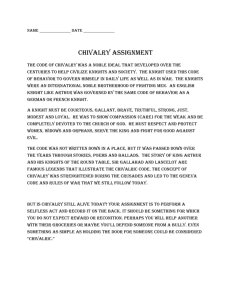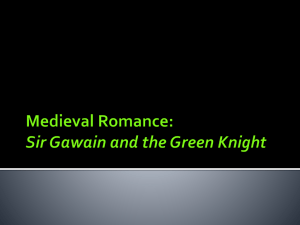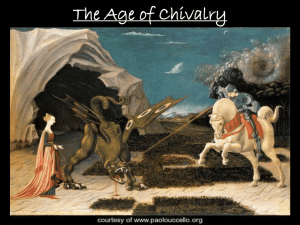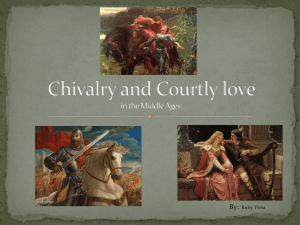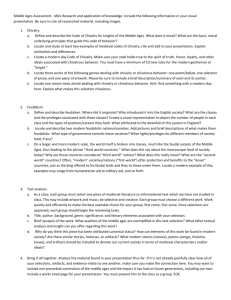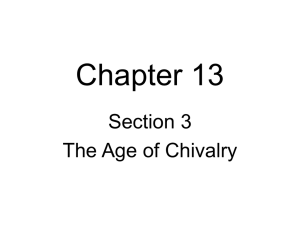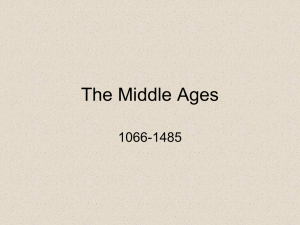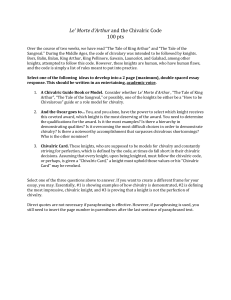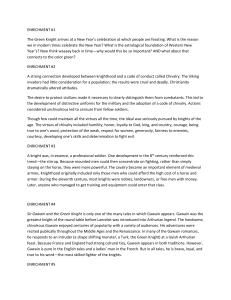Knights Code of Chivalry
advertisement
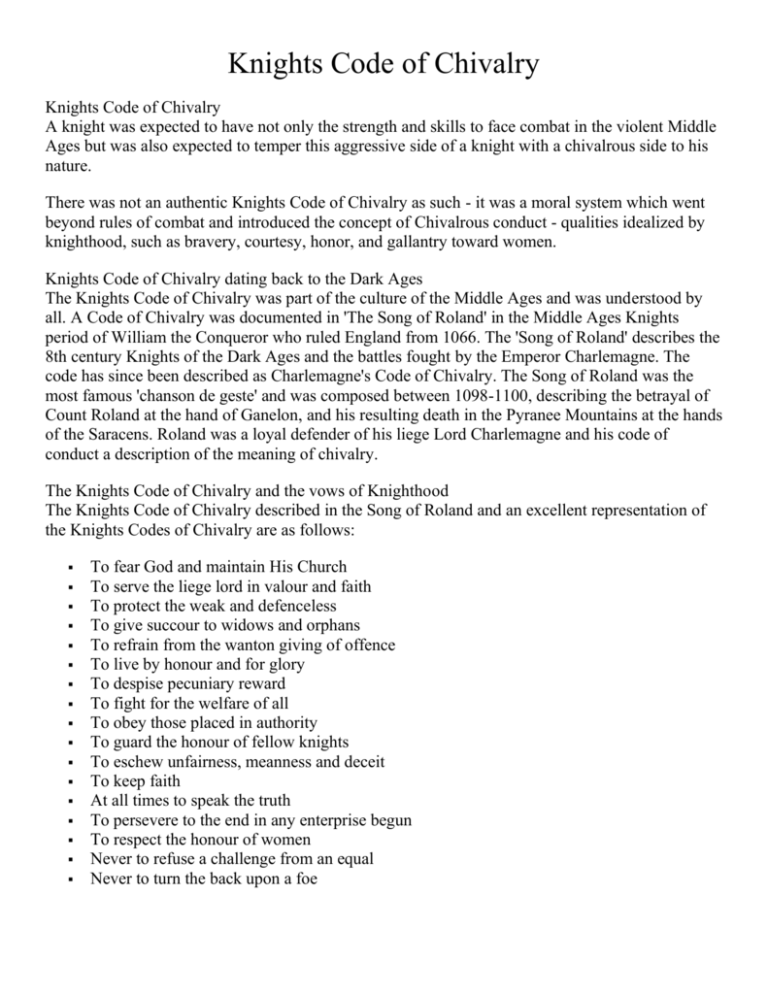
Knights Code of Chivalry Knights Code of Chivalry A knight was expected to have not only the strength and skills to face combat in the violent Middle Ages but was also expected to temper this aggressive side of a knight with a chivalrous side to his nature. There was not an authentic Knights Code of Chivalry as such - it was a moral system which went beyond rules of combat and introduced the concept of Chivalrous conduct - qualities idealized by knighthood, such as bravery, courtesy, honor, and gallantry toward women. Knights Code of Chivalry dating back to the Dark Ages The Knights Code of Chivalry was part of the culture of the Middle Ages and was understood by all. A Code of Chivalry was documented in 'The Song of Roland' in the Middle Ages Knights period of William the Conqueror who ruled England from 1066. The 'Song of Roland' describes the 8th century Knights of the Dark Ages and the battles fought by the Emperor Charlemagne. The code has since been described as Charlemagne's Code of Chivalry. The Song of Roland was the most famous 'chanson de geste' and was composed between 1098-1100, describing the betrayal of Count Roland at the hand of Ganelon, and his resulting death in the Pyranee Mountains at the hands of the Saracens. Roland was a loyal defender of his liege Lord Charlemagne and his code of conduct a description of the meaning of chivalry. The Knights Code of Chivalry and the vows of Knighthood The Knights Code of Chivalry described in the Song of Roland and an excellent representation of the Knights Codes of Chivalry are as follows: To fear God and maintain His Church To serve the liege lord in valour and faith To protect the weak and defenceless To give succour to widows and orphans To refrain from the wanton giving of offence To live by honour and for glory To despise pecuniary reward To fight for the welfare of all To obey those placed in authority To guard the honour of fellow knights To eschew unfairness, meanness and deceit To keep faith At all times to speak the truth To persevere to the end in any enterprise begun To respect the honour of women Never to refuse a challenge from an equal Never to turn the back upon a foe Of the seventeen entries in the Knights Codes of Chivalry, according to the Song of Roland, at least 12 relate to acts of chivalry as opposed to combat. The Knights Code of Chivalry and the legends of King Arthur and Camelot The ideals described in the Code of Chivalry were emphasised by the oaths and vows that were sworn in the Knighthood ceremonies of the Middle Ages and Medieval era. These sacred oaths of combat were combined with the ideals of chivalry and with strict rules of etiquette and conduct. The ideals of a Knights Code of Chivalry was publicised in the poems, ballads, writings and literary works of Knights authors. The wandering minstrels of the Middle Ages sang these ballads and were expected to memorize the words of long poems describing the valour and the code of chivalry followed by the Medieval knights. The Dark Age myths of Arthurian Legends featuring King Arthur, Camelot and the Knights of the Round Table further strengthen the idea of a Knights Code of Chivalry. The Arthurian legend revolves around the Code of Chivalry which was adhered to by the Knights of the Round Table - Honour, Honesty, Valour and Loyalty. Knights Code of Chivalry described by the Duke of Burgandy The chivalric virtues of the Knights Code of Chivalry were described in the 14th Century by the Duke of Burgandy. The words he chose to use to describe the virtues that should be exhibited in the Knights Code of Chivalry were as follows: Faith Charity Justice Sagacity Prudence Temperance Resolution Truth Liberality Diligence Hope Valour The Knights Code of Chivalry as described by the Duke of Burgandy.
